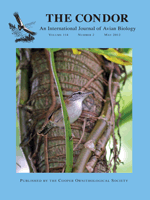Despite high raptor diversity and species of conservation importance, little is known about the structuring of raptor communities in tropical regions. We examined diversity across land uses, spatial-niche overlap among species, community structure, and relationships between abundance and niche position/width of diurnal raptors in Peru. Between April and December in 2008 and 2009, we surveyed raptors by distance sampling along transects, and recorded associated habitat data, in 70 randomly selected plots of 1 km2 in Cerros de Amotape National Park, the Tumbes National Reserve, and its buffer areas. We recorded 563 sightings of 19 species of diurnal raptors. Abundance and richness were highest in the buffer zone and lowest in the national park. Mantel tests revealed no correlation between the species' spatial-niche overlap and body-size differences, but there was a near-significant relationship between spatial-niche overlap and dietary overlap. A canonical correspondence analysis (CCA) of raptor species and habitat variables ordinated species according to latitude, elevation, percentages of vegetation cover, and, in some cases, individual tree species. Abundance was negatively correlated with habitat-niche position (rarer species used “more extreme” habitats) and positively correlated with niche width (standard deviations of CCA axis scores). There was, however, considerable variation in the abundance—niche width relationship, and we were able to identify species with niches narrower than expected. We then calculated “niche bottlenecks” for each species. There was a strong negative relationship between degree of bottleneck and abundance, with the small rare species having particularly narrow bottlenecks.
BioOne.org will be down briefly for maintenance on 14 May 2025 between 18:00-22:00 Pacific Time US. We apologize for any inconvenience.
How to translate text using browser tools
1 May 2012
Diversity, Community Structure, and Niche Characteristics within a Diurnal Raptor Assemblage of Northwestern Peru
Renzo P. Piana,
Stuart J. Marsden
ACCESS THE FULL ARTICLE

The Condor
Vol. 114 • No. 2
May 2012
Vol. 114 • No. 2
May 2012
community
Neotropics
Peru
raptors
Tumbezian zone




